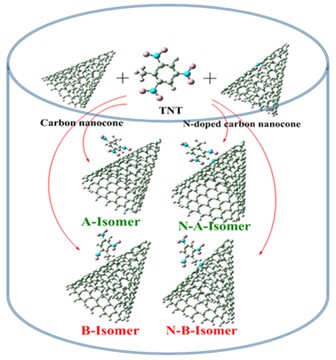[1]. Yang Q., Liang Y., Zhou T., Shi G., Jin L. Electrochem Commun., 2008, 10:1176
[2]. Carrion C.C., Simonet B.M., Valcarcel M. Anal Chim Acta., 2013, 792:93
[3]. Heiss C., Weller M.G., Niessner R. Anal Chim Acta., 1999, 396:309
[4]. Zimmermann Y., Broekaert J.A.C. Anal Bioanal Chem., 2005, 383:998
[5]. Tredici I., Merli D., Zavarise F., Profumo A. J Electroanal Chem., 2010, 645:22
[6]. Hundal L.S., Singh J., Bier E.L., Shea P.J., Comfort S.D., Powers W.L. Environ Pollut., 1997, 97:55
[7]. Alizadeh T., Zare M., Ganjali M.R., Norouzi P., Tavana B. Biosens Bioelectron., 2010, 25:1166
[8]. Ercag E., Uzer A., Apak R. Talanta., 2009, 78:772
[9]. Won W.D., Disalvo L.H., James N.G. Appl Environ Microbiol., 1976, 31:576
[10]. Saravanan N.P., Venugopalan S., Senthilkumar N., Santhosh P., Kavita B., Prabu H.G. Talanta., 2006, 69:656
[11]. Ahmadi R., Ebrahimikia M. Phys Chem Res., 2017, 4:617
[12]. Yu X., Tverdal M., Raaen S., Helgesen G., Knudsen K.D. Appl Surf Sci., 2008, 255:1906
[13]. Mohasseb A. Int J New Chem., 2019, 6:215
[14]. Vessally E., Behmagham F., Massoumi B., Hosseinian A., Edjlali L. Vacuum., 2016, 134:40
[15]. Baei M.T., Peyghan A.A., Bagheri Z. Struct Chem., 2013, 24:1099
[16]. Ahmadi R., Jalali Sarvestani M.R., Taghavizad R., Rahim N. Chem Methodol., 2020, 4:68
[17]. Razavi R., Eghtedaei R., Rajabzadeh H., Najafi M. Inorg Chem Commun., 2018, 94:85
[18]. Rastegar S.F., Soleymanabadi H., Bagheri Z. J Iran Chem Soc., 2015, 12:1099
[19]. Yu X., Raeen S. J Appl Phys., 2015, 118:10
[20]. Jalali Sarvestani M.R., Ahmadi R. J Water Environ Nanotechnol.,2019, 4:48
[21]. Parlak C., Alver O. J Mol Struct., 2019, 1198:126881
[22]. Todde G., Jha S.K., Subramanian G., Shukla M.K. Surf Sci., 2018, 668:54
[23]. Van B.N., Nikolaeva E.V., Shamov A.G., Khrapkovskii G.M., Tsyshevsky, R.V. Int J Mass Spectrom., 2015, 392:7
[24]. Enlow M.A. J Mol Graph Model., 2012, 33:12
[25]. Hang G.Y., Yu W.L., Wang T., Wang J.T. Comput Mater Sci., 2019, 156:77
[26]. Sriyab S., Lat K.J., Prompinit P., Wolschann P., Hannongbua S., Suramitr S. J Lumin., 2018, 203:492
[27]. Ghosh P., Das J., Basak A., Mukhopadhyay S.K., Banerjee P. Sens Actuators B Chem., 2017, 251:985
[28]. Anbu V., Vijayalakshmi K.A., Karunathan R., Stephen A.D., Nidhin P.V. Arab J Chem., 2019, 12:621
[29]. Jaridann M., Roy S., Rachid H.A., Lussier L.S. J Hazard Mater., 2010, 176:165
[30]. Hernández-Riveraa S.P., Castillo-Chará J. Vib Spectrosc., 2010, 53:248
[31]. Gaussian 16, Revision C.01, Frisch M. J., Trucks G.W., Schlegel H.B., Scuseria G.E., Robb M.A., Cheeseman J.R., Scalmani G., Barone V.Petersson,, G.A., Nakatsuji H., Li X., Caricato M., Marenich A.V., Bloino J., Janesko B.G., Gomperts R., Mennucci B., Hratchian H.P., Ortiz J.V., Izmaylov A.F., Sonnenberg J.L., Williams-Young D., Ding F., Lipparini F., Egidi F., Goings J., Peng B., Petrone A., Henderson T., Ranasinghe D., Zakrzewski V.G., Gao J., Rega N., Zheng G., Liang W., Hada M., Ehara M., Toyota K., Fukuda R., Hasegawa J., Ishida M., Nakajima T., Honda Y., Kitao O., Nakai H., Vreven T., Throssell K., Montgomery J.A., Peralta J.E., Ogliaro F., Bearpark M.J., Heyd J.J., Brothers E.N., Kudin K.N., Staroverov V.N., Keith T.A., Kobayashi R., Normand J., Raghavachari K., Rendell A.P., Burant J.C., Iyengar S.S., Tomasi J., Cossi M., Millam J.M., Klene M., Adamo C., Cammi R., Ochterski J.W., Martin R.L., Morokuma K., Farkas O., Foresman J.B., Fox D.J., Gaussian, Inc., Wallingford CT, 2016
[32]. Ghiasi R., Kanani F.A.K., Asian J. Nanosci. Mater., 2018, 1:234
[33]. Ghiasi R., Bharifar H., Hosseinzade S., Zarinfard M.A., Hakimyoun A.H., J. Appl. Chem. Res., 2014, 8: 29
[34]. Ghiasi R., Fashami M.Z., Hakimioun A.H., J. Theor. Comput. Chem., 2014, 13:123
[35]. Alavi H., Ghiasi R., Ghazanfari D., Akhgar M.R., Rev. Roum. Chim., 2014, 59: 883
[36]. Alavi H., Ghiasi R., J. Struct. Chem., 2017, 58: 30
[37]. Ghiasi R., Sadeghi N., J. Theor. Comput. Chem., 2017, 16: 1750007
[38]. Kazemi Z., Ghiasi R., Jamehbozorgi S., J. Struct. Chem., 2018, 59: 1044


